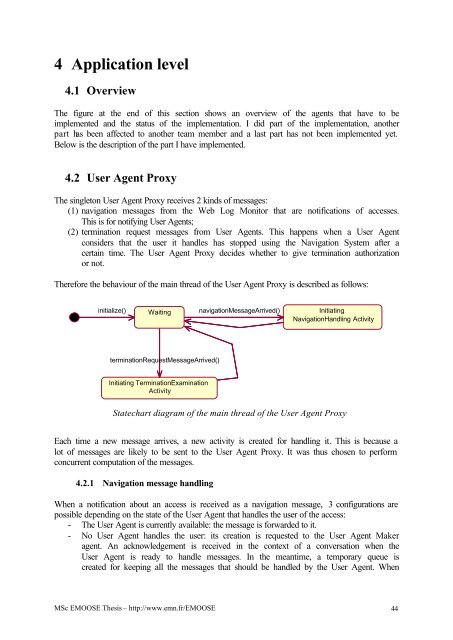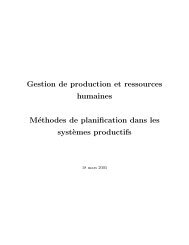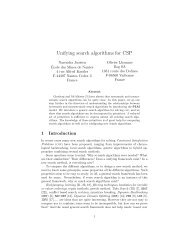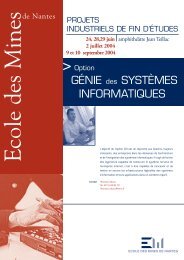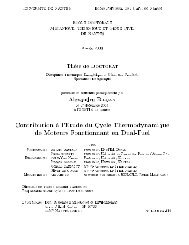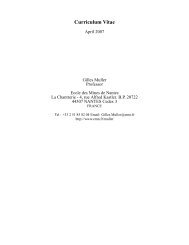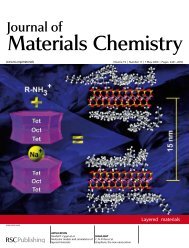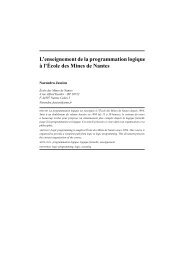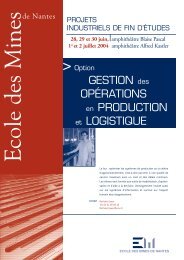pdf - 395 K - Ecole des mines de Nantes
pdf - 395 K - Ecole des mines de Nantes
pdf - 395 K - Ecole des mines de Nantes
You also want an ePaper? Increase the reach of your titles
YUMPU automatically turns print PDFs into web optimized ePapers that Google loves.
4 Application level4.1 OverviewThe figure at the end of this section shows an overview of the agents that have to beimplemented and the status of the implementation. I did part of the implementation, anotherpart has been affected to another team member and a last part has not been implemented yet.Below is the <strong><strong>de</strong>s</strong>cription of the part I have implemented.4.2 User Agent ProxyThe singleton User Agent Proxy receives 2 kinds of messages:(1) navigation messages from the Web Log Monitor that are notifications of accesses.This is for notifying User Agents;(2) termination request messages from User Agents. This happens when a User Agentconsi<strong>de</strong>rs that the user it handles has stopped using the Navigation System after acertain time. The User Agent Proxy <strong>de</strong>ci<strong><strong>de</strong>s</strong> whether to give termination authorizationor not.Therefore the behaviour of the main thread of the User Agent Proxy is <strong><strong>de</strong>s</strong>cribed as follows:initialize()WaitingnavigationMessageArrived()InitiatingNavigationHandling ActivityterminationRequestMessageArrived()Initiating TerminationExaminationActivityStatechart diagram of the main thread of the User Agent ProxyEach time a new message arrives, a new activity is created for handling it. This is because alot of messages are likely to be sent to the User Agent Proxy. It was thus chosen to performconcurrent computation of the messages.4.2.1 Navigation message handlingWhen a notification about an access is received as a navigation message, 3 configurations arepossible <strong>de</strong>pending on the state of the User Agent that handles the user of the access:- The User Agent is currently available: the message is forwar<strong>de</strong>d to it.- No User Agent handles the user: its creation is requested to the User Agent Makeragent. An acknowledgement is received in the context of a conversation when theUser Agent is ready to handle messages. In the meantime, a temporary queue iscreated for keeping all the messages that should be handled by the User Agent. WhenMSc EMOOSE Thesis – http://www.emn.fr/EMOOSE 44


